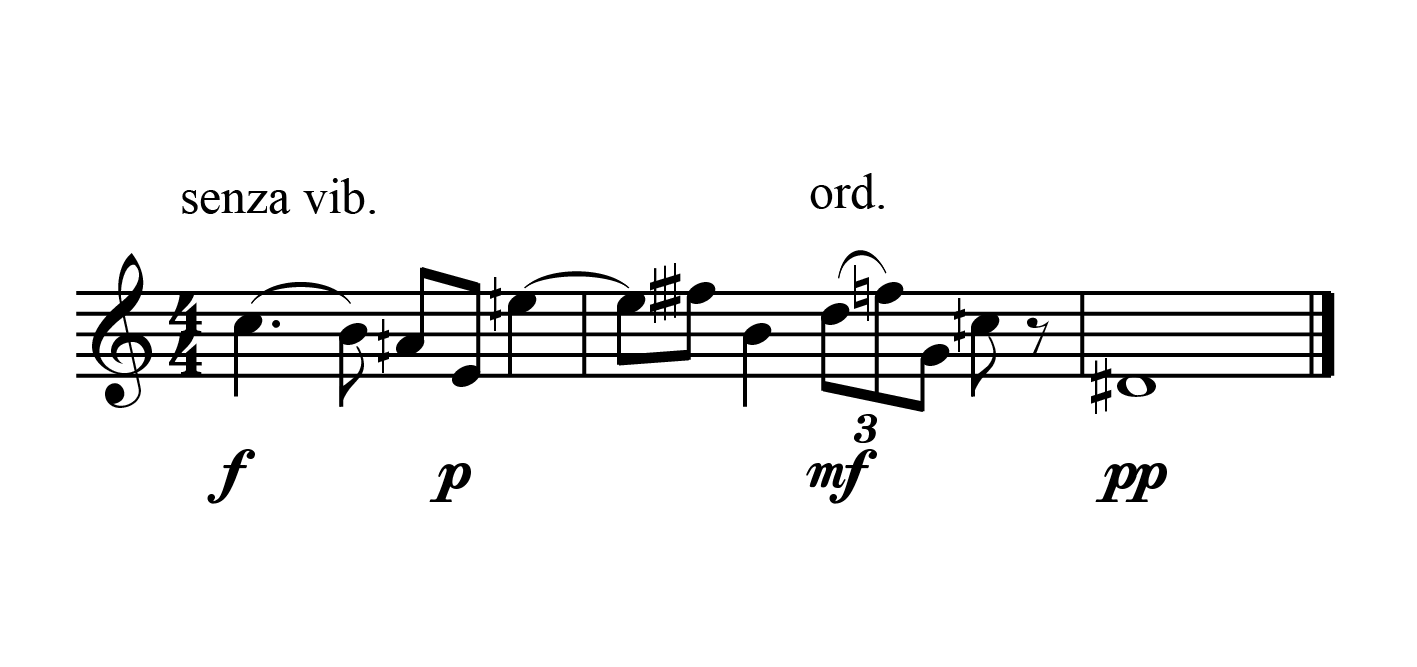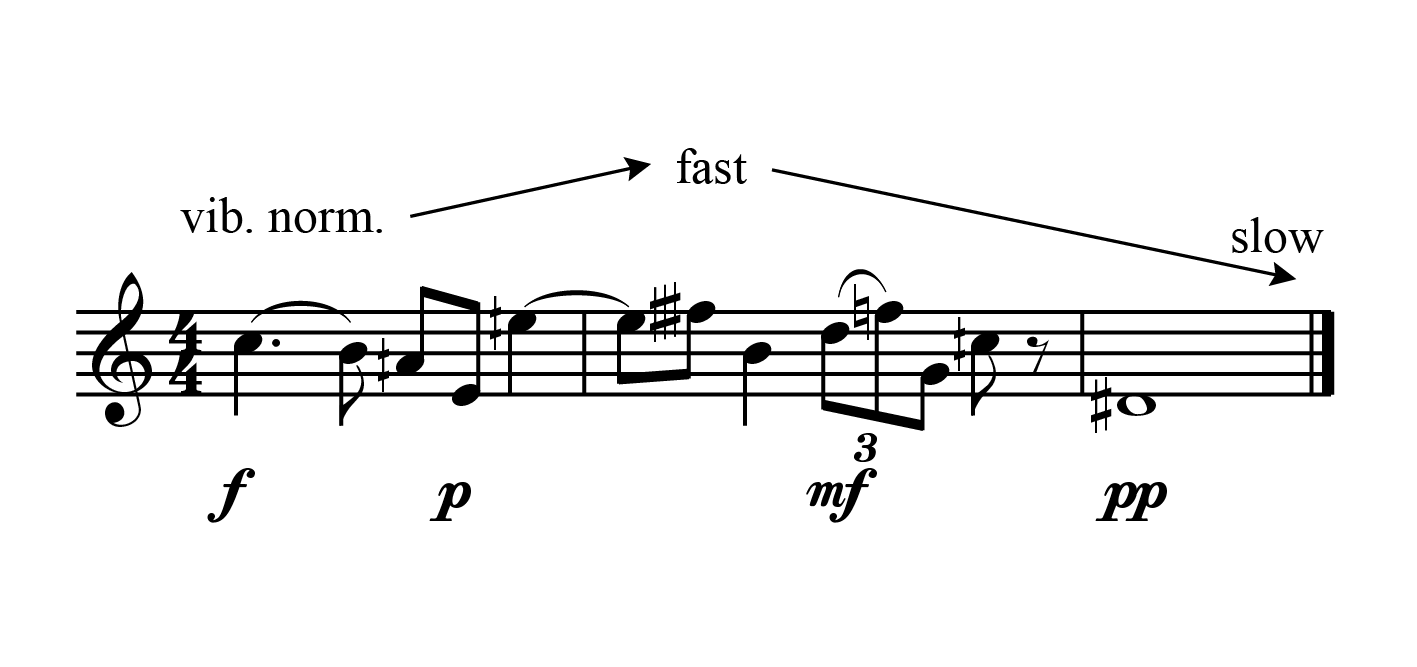Vibrato
Vibrato is a fluctuation in sound and pitch which can be used as an expressive tool and may be controlled at will by the player. For a particular effect, a composer may specify the amount of vibrato to be used. A vibrato-less sound can be difficult to control, as pitch may become less stable, but it can be used to great effect by the composer in the right circumstances.
It is worth noting that due to the nature of sound production on the bass flute, the most natural and effective use of vibrato is also linked to dynamic. It is usual for a skilled player to employ a gentle vibrato (or none at all) at quiet dynamics and to reserve a full vibrato for fortissimo dynamics. The bass flute’s sound lends itself to using less vibrato than is common on the C flute, and the depth and speed of the vibrato alters the timbre of the sound and the expressive qualities within it. Unless particularly specified by the composer, the player will choose a level of vibrato deemed appropriate for the music they are playing.
Increasing the amplitude of the vibrato generally requires the use of more air, and therefore increases the overall dynamic of the sound.
Vibrato
Notation of vibrato
Vibrato can be specified as off or on using the terms senza vib. and ord. The speed of vibrato can be shown using arrows (upwards to show an increase in speed and downwards to show a decrease in speed) or other graphic means.

Specifying use of vibrato

Changing speed of vibrato